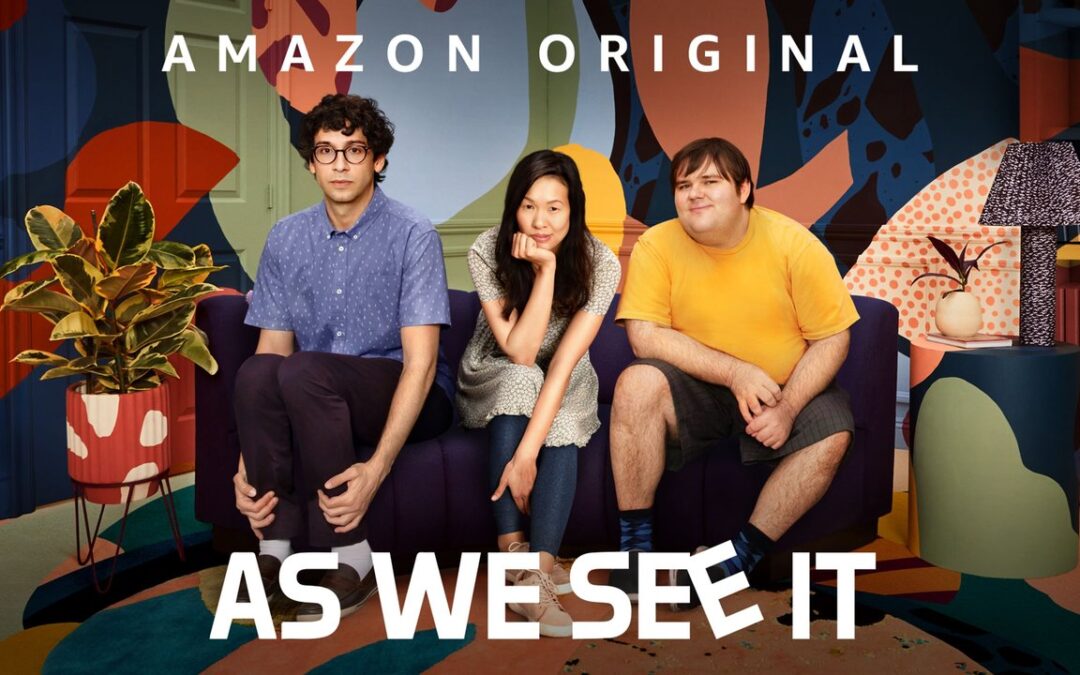More than a few people have asked me what I think of the new series Amazon, As We See It. If you haven’t seen it yet, the series follows the lives of three autistic young adult (mid-20s) sharing an apartment in California. Their families pay for the apartment and employ a neurotypical young woman of the same age to help with day-to-day care. This care includes driving them to appointments, straightening up the apartment, facilitating daily meetings to track progress on goals, and general oversight of their whereabouts using smartphone apps and text check-ins. She does not live in the apartment but is highly involved in the lives of these young adults and their families.
The most notable and important contribution of As We See It is that all three of the autistic young adults in the story are portrayed by openly autistic actors. This is a significant departure from other fictional series in which neurotypical actors are typically cast to play autistic characters. It is a HUGE win for the disability community who have lobbied “Nothing about us without us” for years. It is wonderful to know that Hollywood is starting to listen. Learn more about the 3 main actors here:
- Sue Ann Pien as Violet
- Rick Glassman as Jack
- Albert Rutecki as Harrison
I would like to talk first about the character of Mandy who plays the aide for the three main characters. Within the context of the story, the characters refer to her role in many ways including life coach, caretaker, aide, and friend. To me, she’s more of a surrogate parent/house mother. I would LOVE to see her job description! She crosses many lines and blurs almost every boundary. However, Mandy is important to the story because she serves as the connector for the individual characters and storylines. I think Mandy’s biggest contribution to the series is through her total acceptance of the three main characters as they are. She is also having experiences with the main characters in a very “unfiltered” way. The other characters react to the autistic adults through the lenses of their prior experiences, worries and concerns, and other “baggage”.
As We See It succeeds in exposing the complexity of autism. We follow three young adults with the same diagnosis who have very different strengths and challenges. Their desires, however, overlap significantly. All three express the desire for love, companionship, “normalcy.” Through the day-to-day experiences the characters face, those of us who are not autistic can get a small glimpse into some of the challenges autistics face. In one scene (no spoilers, I promise!), one of the young adults is in a restaurant trying to focus on a conversation but he cannot filter out the other sounds around him (crying babies, waiters singing happy birthday, the clanking of silverware). One of the characters completely misses the nuances of a conversation and comes to a very wrong conclusion and takes action that can lead to danger.
The series also shines a light on the fears and worries families of autistic young adults often have. Many parents have expressed to me their desire for their young adult to be more independent because they “aren’t going to live forever” and want to make sure their child will be okay. This is a major theme in the series as is the completely contradictory desire family members often have to protect autistic young adults from hurt and disappointment at all costs, even if it means limiting independence.
Honestly, the title of the series sums up my thoughts about the show nicely. If you are autistic, the show can provide some insights into the hopes, fears, and motivations of your family members. It can also help you understand some challenges other autistic individuals may have that are not issues for you. In other words, help you understand how THEY see it. If you love someone who is autistic, watching the show gives you the opportunity to experience some things as your loved one might. It may help you better understand their hopes, fears, and motivations. In other words, how THEY see it. My hope is that As We See It may help ALL of us see a little more clearly.

